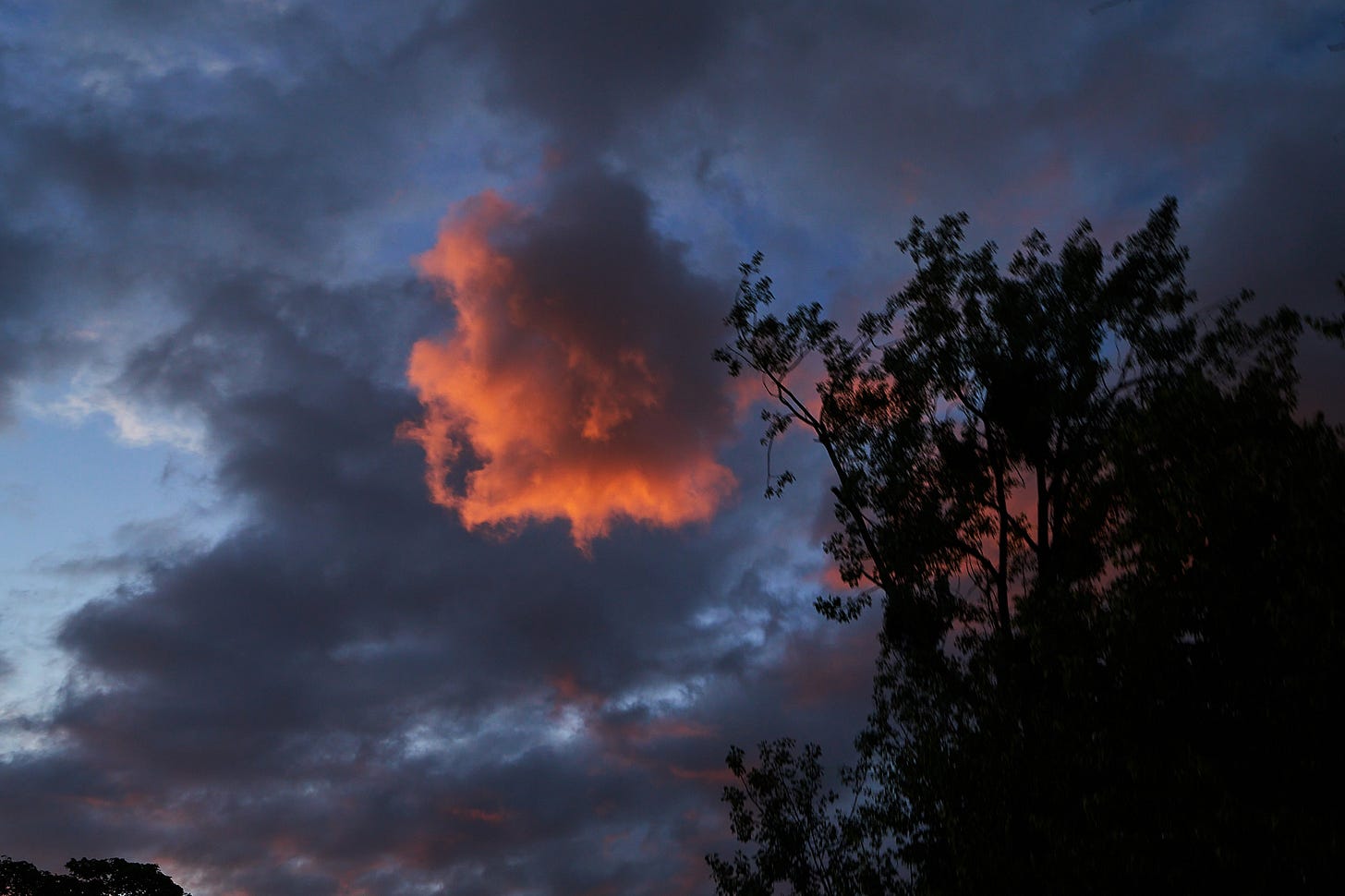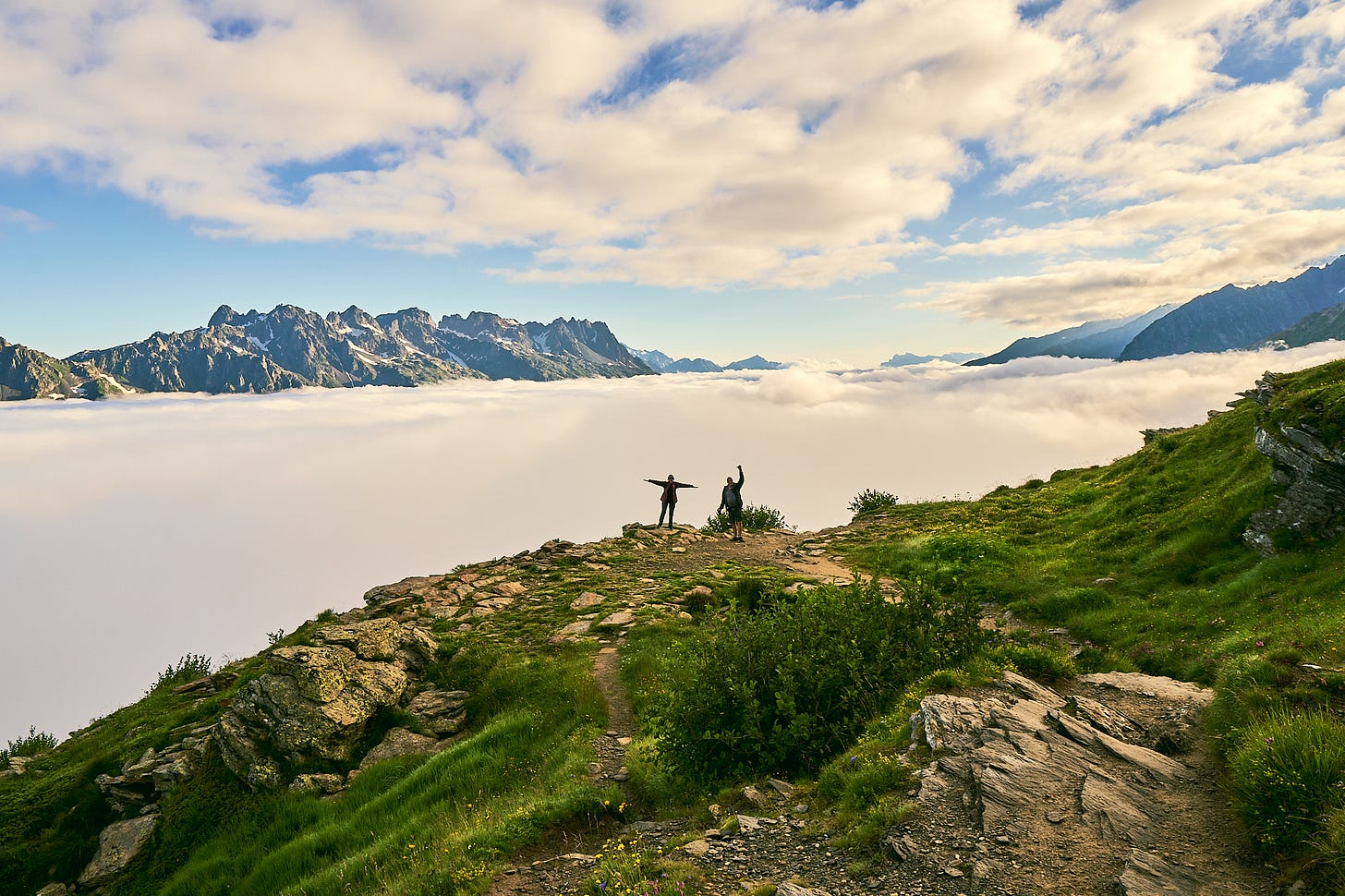“Hey, Siri, what’s the temperature right now?”
When Did We Stop Observing?
Before weather apps, there was the weather. Back when to know the temperature, we’d step outside and feel it with our skin. Back when we knew it would rain if rolling clouds turned dark and water dropped from the sky. When did we loose our sense of observation and turn to an app to tell us what we can easily walk outside and see for ourselves?
Last week I saw a short documentary by Patagonia Films called The Last Observers. It’s about a couple in Sweden who lived and ran the last manual weather station in the country. For 36 years they watched and recorded the weather every three hours of the day and night, seven days a week, every day of the year.
20 minutes is how long it takes to observe and record weather, according to them. Clouds, temperature, air pressure, wind speed, wind direction, and the height of the 27 different types of clouds.
The couple took turns going out of their lighthouse home and up to the observation tower, walked out to the ocean, and did this religiously for over three decades and never missed a single observation. That sums up to over 105,000 observations. Rain, shine, blizzard, heatwave, or torrential downpour. They observed and recorded it all.
Apparently all weather stations used to be like this. Before automations and machines it was all observed and recorded by people. At one point there were 900 manual weather observation stations in Sweden. Then down to just 1. Now as of October 2024, there are zero.
To some, manually checking the weather might sound cumbersome or monotonous. But to them it was a privilege to be the eyes that witnessed it all. They felt every rain drop, every ray of sun, and every change in wind direction.
Speaking of changes, they have been eye witnesses to the drastic changes our planet has been going through over the past 30+ years. One of the most memorable lines from the film is when the woman explained that the earth is always changing. But what’s alarming is the speed at which it’s all changing. Extreme weather is changing everything from the flight patterns of birds to the everyday rhythm of humans.
Among all the interesting things I learned from the film, perhaps the most impactful is the power of observation. Something as simple as the weather is actually complex. I’ve never stood outside for 20 minutes just to notice the weather. It’s usually something that’s passing. Something that seems out of our humanly control, but that we are actually influencing.
I’ve noticed the times I’m most observant of the weather are when I spend time outdoors— camping, running, hiking. When we are more hyper aware of the environment around us because we are usually unprotected and left to the mercy of the elements.
Part of me wonders what this couple in the film’s life was like, being strapped down to the weather station their entire lives. I guess they couldn’t travel and see the world. They sacrificed things like sleep and comfort. But on the other hand they spent so much time outside. So much time in nature. They exercised their observation skills. They felt every slight degree change in temperature and appreciated every single cloud in the sky. So even though their feet probably never left their land much, they felt it all.
This is not to shame weather apps. They are incredibly useful even this week when thanks to weather predictions we were able to prepare for a freezing snow storm in Austin, Texas. Weather predictions allowed cities to prepare with salt trucks, people like me to drip our faucets and wrap our pipes, businesses to close for employee safety, and everyone to stock up on food and water in case of outages. My point, and perhaps the film’s point too, is for us not to loose the itch of curiosity. The role of observers.
Next time it’s raining, I hope we maybe go out for a stroll, splash in the puddles and feel the drops on our face. When it’s snowing, for us to venture outside and roll around in it and build a snowman. When it’s sunrise, let’s watch the majestic colors. When it’s sunset, let’s admire the rolling clouds. When there are clouds, let’s use our imagination and give them shapes. When the sky is blue, bask in the beautiful expansiveness. Who knows, maybe we try taking 20 entire minutes and observe the weather.
Life moves by too fast for us not to soak in every little detail that hides in the wind. For if we listen closely we will make sense of its whispers.




